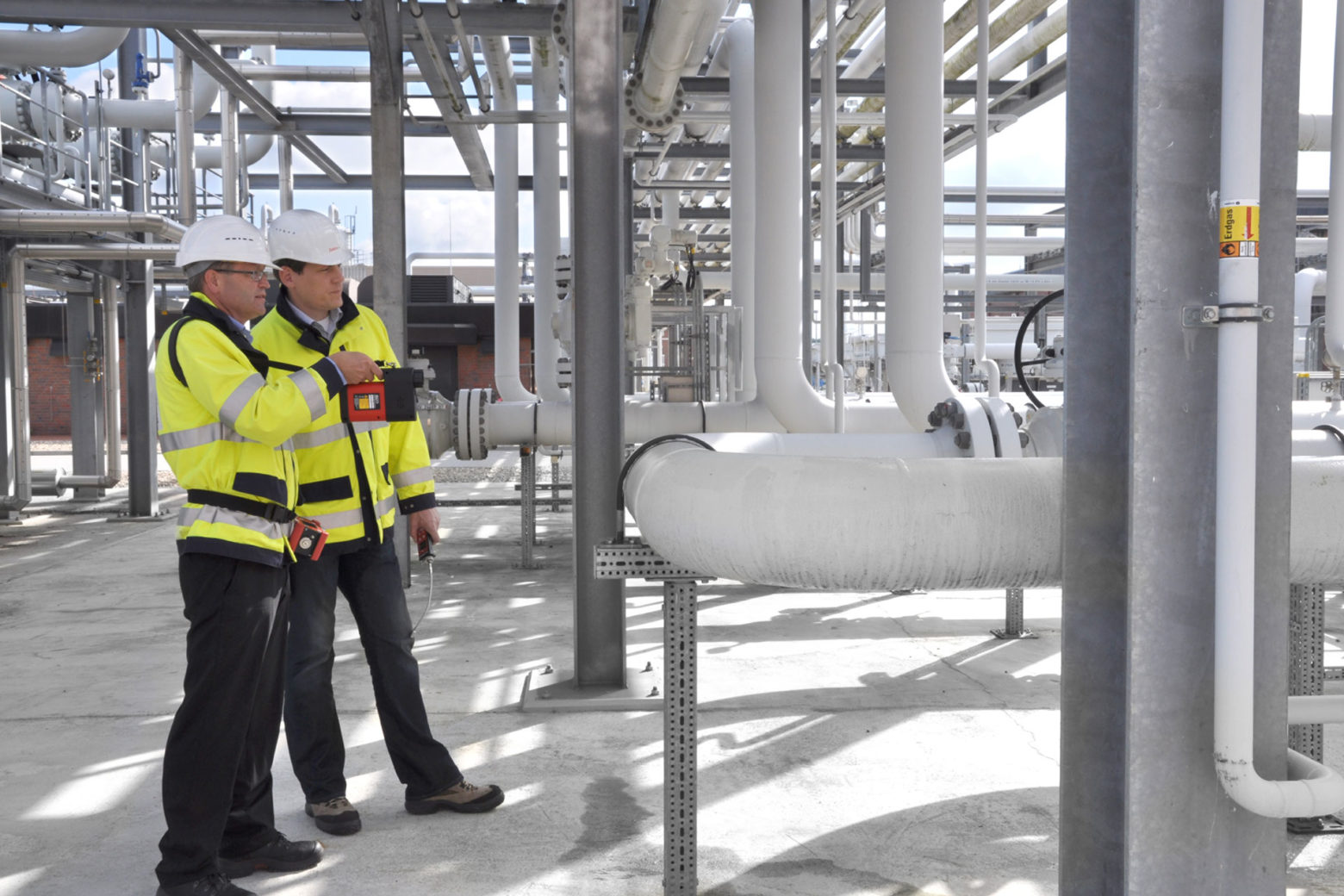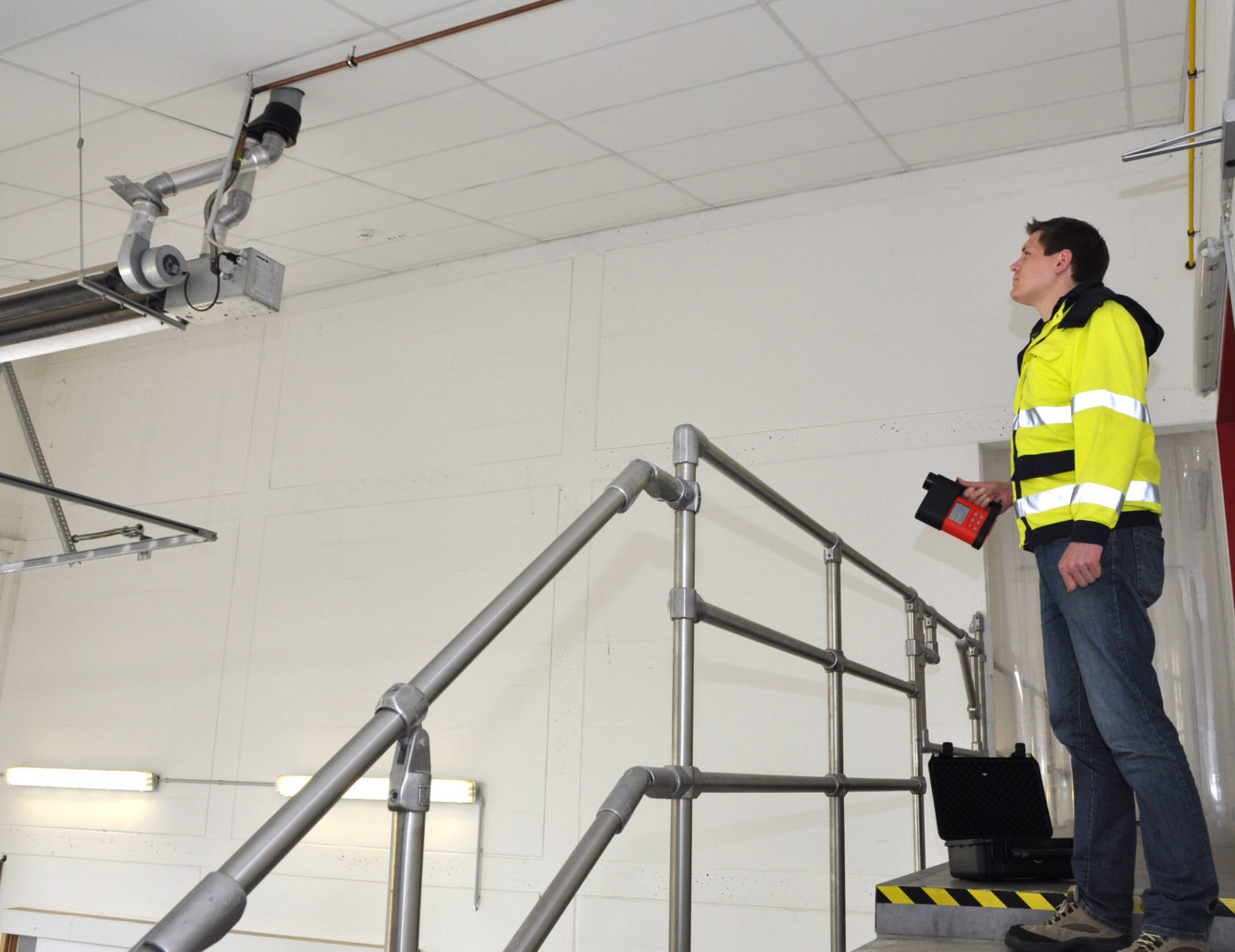In active laser infrared spectrometry, a laser beam (measuring laser) is aligned with a facility to be inspected and the reflected portion of the laser beam is evaluated. In a special wavelength range of about 1.635 µm, the presence of methane changes the energy and this can be detected and evaluated.
For the operation it is necessary that the laser beam can be reflected. Since not all materials reflect the laser light well, the measuring devices monitor the quality of the reflection and warn of inadequate conditions.
There is a lot to consider for the operation.
The concentration ppm is not measured as usual, but the concentration length ppm x m!
Just imagine every methane molecule damping the laser beam. It is irrelevant how the methane molecules are distributed in the path of the laser beam. 1,000 gas molecules densely compressed at the end of the laser beam path result in the same attenuation as 1,000 gas molecules distributed over the entire path. A display of 10,000 ppm x m can be a gas cloud with a length of 1 m and a concentration of 10,000 ppm, or a cloud of 10 m with a concentration of 1,000 ppm. The display is just as large with a cloud of 100,000 ppm which is 0.1 m long.
Based on our experience, active laser measuring instruments for remote detection of methane are only useful in a few cases for the inspection of gas pipelines.
Useful area of application for Laser Infrared Spectrometry
For gas pipes that are difficult to reach in buildings, industrial plants and halls where the pipes are often fixed to the ceiling or upper third in an exposed position. In this situation, there are normally no problems with the reflection of the laser beam and the wind speeds are also low. This means that escaping gas will not be blown away immediately and can therefore be detected at a significant concentration. It is important to know that no small leakage rates are searched for, but it concerns significant gas leaks. This is because the rooms are also larger in terms of dimensions and have a correspondingly large volume.
In the same way, pipelines on bridges can be inspected well if one pays attention to low wind speed and keeps an eye on the quality of the reflection. The device in use in the pictures shown is our remote methane leak detector ELLI.
Not useful in Germany:
In the US and some other countries, these hand-held devices are also used for the above-ground inspection of underground pipelines. There, however, the piping is often routed in such a way that the house connection outside the building is led upwards and this point, together with the controller and meter, is checked during the pipe network inspection. We consider this to be a very severe loss of quality compared to the use of conventional devices with a carpet probe or, if necessary, with a bell probe.
Escaping gas shows only low concentrations above the ground. The layer thickness of the gas is very low. This means that only a few ppm x m concentrations are available. However, escaping gas from buildings is a high risk. And a few ppm x m concentrations on the surface do not mean that there is no danger in the ground. Damage to the house connection with considerable gas leakage can be present here.
Let’s be very clear! For us the examination of a not accessible house connection with a laser measuring device does not mean in any case that this house connection is safe.
In the case of gas leakage, we repeatedly find that there are only a few ppm readings on the surface. And these cannot be found with active laser remote detection.
The safest method at the moment is to walk the track with a carpet probe and a connected measuring device, which sucks in the sample and displays the smallest traces of gas in ppm range. The faster the response of the measuring device (T90 time), the better the readings.


